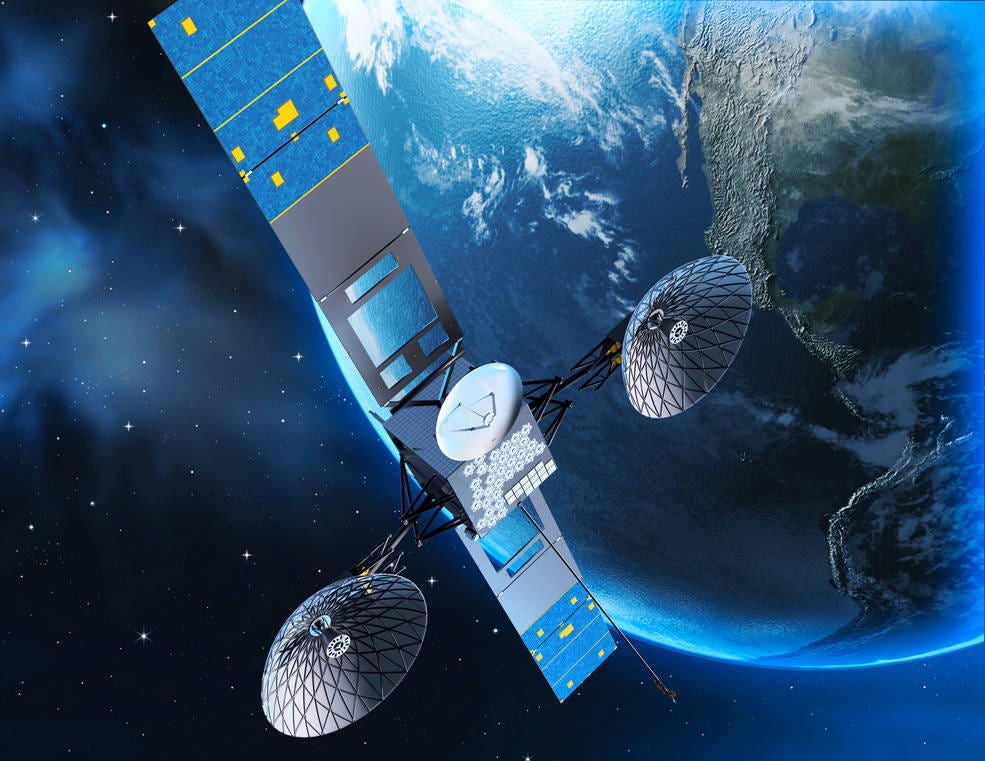
An artist rendering of a NASA Tracking and Data Relay Satellite in orbit.
Image: NASANASA has awarded deals to Amazon’s Project Kuiper satellite company and SpaceX’s Starlink as part of $287.5 million in funding for commercial operators to deliver the space agency’s future satellite communications.
The funds were awarded to six satellite firms as part of NASA’s Communication Services Project (CSP), which looks to tap the private sector for near-Earth SATCOM replacements for its soon-to-be-decommissioned Tracking and Dara Relay Satellite (TDRS).
NASA awarded Amazon’s Kuiper Government Solutions $67 million for a “commercial optical low-Earth orbiting relay network for high- and low-rate SATCOM services to spacecraft in low-Earth orbit for routine missions, contingency operations, and early operations phase communications.”
SEE: NASA will test this ‘SpinLaunch’ system that hurls satellites into space
SpaceX landed $69.5 million for a a commercial optical low-Earth orbiting relay network for high-rate SATCOM services to spacecraft in low-Earth orbit for routine missions, contingency operations, launch and ascent, and early-operations phase communications. Other winners of the program included Inmarsat, Viasat, Telecast, and SES.
SpaceX has launched about 2,000 broadband-beaming Starlink satellites into low-Earth orbit (LEO), while Amazon has yet to launch any of its proposed satellite constellation.
However, Amazon announced earlier this month that Project Kuiper had secured 83 launches from Arianespace, Jeff Bezos’ Blue Origin, and United Launch Alliance (ULA), which have enough capacity to carry the majority of its proposed 3,236 satellites. Amazon says it has more than 1,000 people working on the Project Kuiper.
The companies have until 2025 to demonstrate their technology can deliver new high-rate and high-capacity two-way communications. NASA wants multiple long-term deals with firms for near-Earth SATCOM operations by 2030, while it phases out its own systems.
Eli Naffah, the head of NASA’s Communications Services Project (CSP), told Reuters the goal was to get industry to develop capabilities for customers that are “not just NASA, but other space-based customers as well, hopefully bringing down our costs.”
As NASA explains, it envisages CSP services will be used by other government agencies and commercial space flight companies to support their own mission requirements. It also looks to change data transmissions from predominantly being from space to Earth towards higher capacity, two-way communications.





















